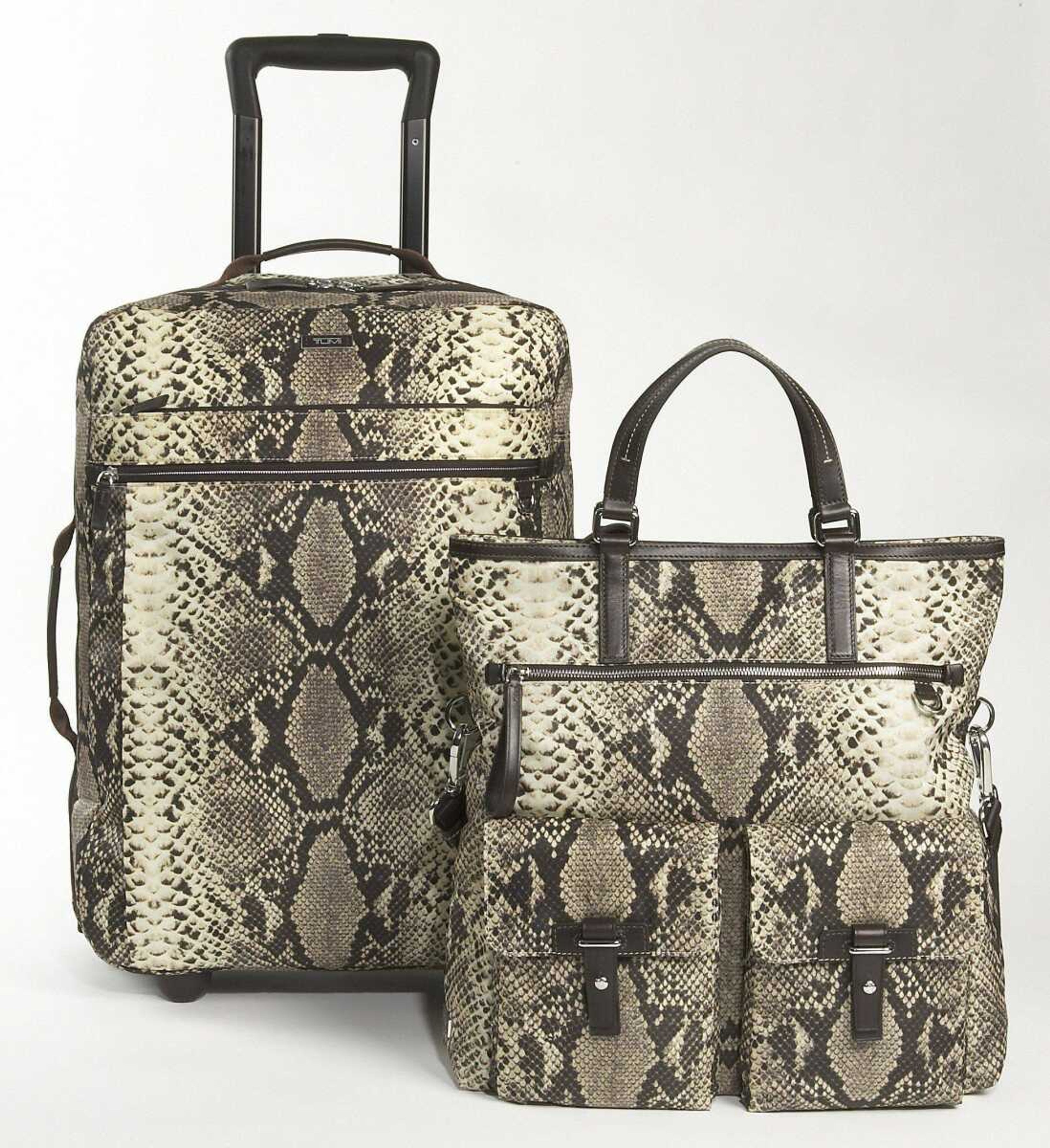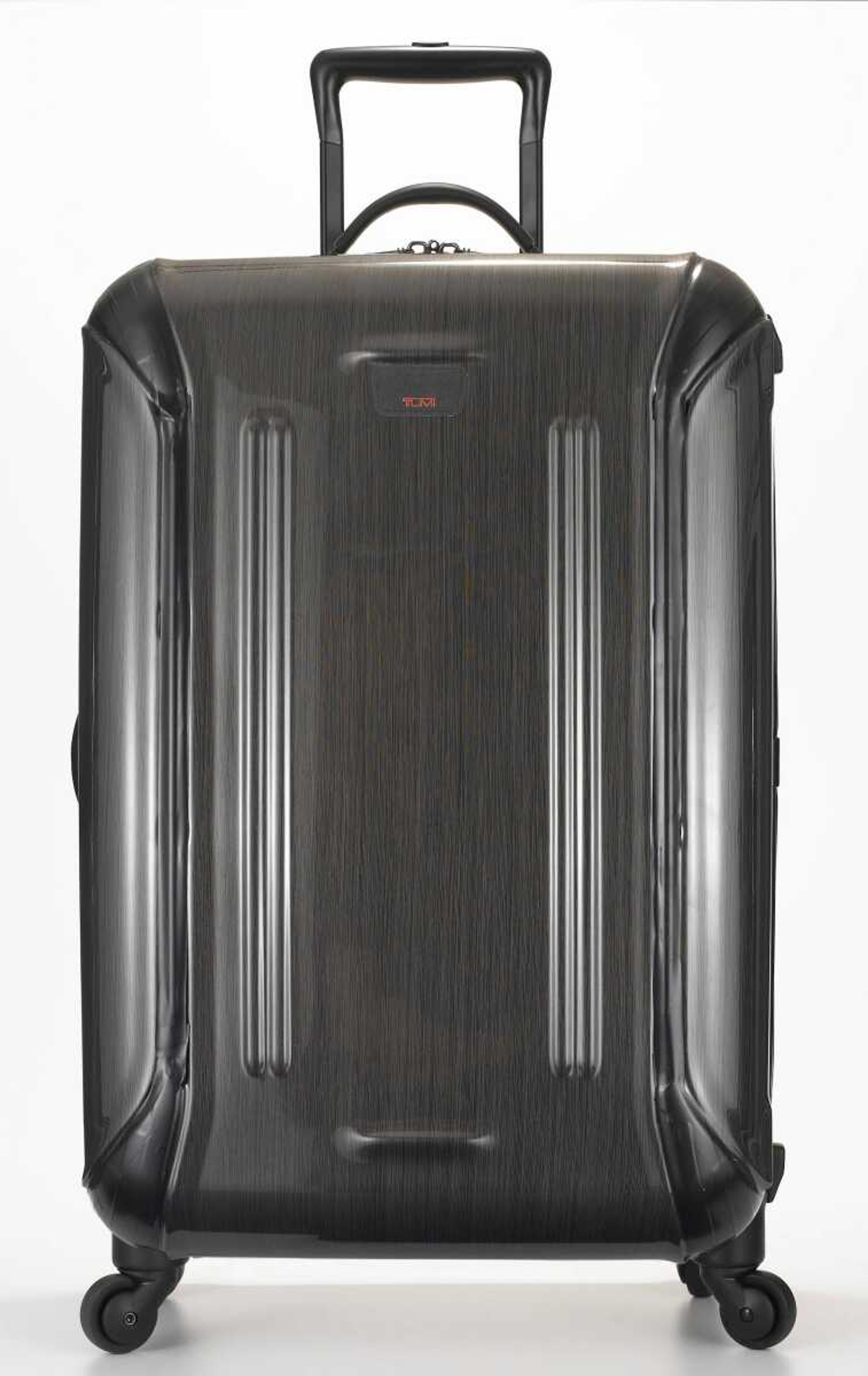New materials are taking the 'lug' out of luggage
NEW YORK -- Travelers have no interest in lugging their luggage anymore. They don't have to, according to experts. A combination of consumer demand, design modifications and innovative materials has allowed manufacturers to switch gears to produce smaller, lighter and ergonomic products, said Alan Krantzler, vice president of Tumi luggage brand's product management...
NEW YORK -- Travelers have no interest in lugging their luggage anymore.
They don't have to, according to experts.
A combination of consumer demand, design modifications and innovative materials has allowed manufacturers to switch gears to produce smaller, lighter and ergonomic products, said Alan Krantzler, vice president of Tumi luggage brand's product management.
"The No. 1 trend in the industry right now is about lightweight," he said. "It's always been a consumer demand, but it has become increasingly important."
The driving factors, he said: an aging population who finds it difficult to pull around burdensome, easily tipped bags; airline fees, including some carriers that not only charge for heavy bags but any checked bag at all; and the desire for business-leisure crossover items.

"People want a carry-on that could be a weekend bag, a gym bag and be able to put a computer in it," said Krantzler, who also oversees merchandising. "People are looking to spend money smartly. They don't want to give up quality but want value."
Options include soft foam-frame bags and hard-shell plastic.
"What affects weight is more the components of the bag, the fabrics, how it's made," Krantzler said. "It's not really about the shape."
The polycarbonate plastic is, essentially, a much lighter version of those practically indestructible suitcases of a few generations ago. (Remember those American Tourister ads with a gorilla tossing one around?)
"The fashion, lightweight, hard-side bag is a big thing in Europe," said Stephen Cardino, Macy's fashion director for its home division. "It's like featherweight. I'm not sure if the Europeans are enamored with the hard-side product or the look, which is so sleek. It looks great coming off the carousel."
It has potential to catch on in the U.S., Cardino said, but Americans also seem to like their softer bags, knowing they can always shove in that extra sweater. Maybe they'll end up with a combination of pieces that are best suited to their lifestyles and travel destinations, he said.
"Many people don't buy luggage sets anymore. It's more like furniture shopping, a piece from here and a piece from there."
Sales of suitcases and garment bags in the U.S. were almost $950 million for the 12-month period ending in May, according to market researchers The NPD Group. While total sales for these categories dropped 17 percent from the year before, carry-on pieces dropped only 2 percent, while larger bags dropped 29 percent.
Both Cardino and Hyla Bauer, executive fashion editor of Conde Nast Traveler, agree that suitcases should last quite a while for a family that uses their luggage only a few times a year.
So, they say, buy the best you can afford.
"The durability versus price issue is pretty major," Bauer said. "After two or three flights, you might find out the cheap, lightweight bag is flimsy and you'll just need a new bag."
She also notes that some manufacturers are now offering warranties for wear and tear.
Jeff Herold, founder of the Train Reaction luggage system, said he found a light but strong Cordura nylon fabric known as Invista that is made out of high tenacity fibers for his bags.
But, while the suitcases themselves are light, he wants you to stuff them full. It helps with the nontraditional weight distribution that puts the bulk up against the telescoping handles. It works even better when the carry-on bag is attached, he said.
There's a patented snap-unsnap handle that locks into an inclined position. "Once I figured out how to lug 80 pounds of luggage with one finger, I felt like I figured out how to build the pyramids," he said.
Tumi's Krantzler said he favors a four-wheel suitcase, which is "driven" more like a grocery cart than dragged, he explains. "There's a lot less stress on the wrist -- the bag can be upright all the time. The wheels spin independently."
Bauer adds: "Wheels are essential, that goes without saying. ... The wheelies from 10 years ago to now are worlds apart. You're now doing 360-degree turns and have turning handles."
As a frequent flier, Krantzler also likes the flatter messenger-style bags for his laptop -- a style that often seems to satisfy TSA screeners without taking the computer out of the bag.
In general, he adds, more people are eyeing those hands-free, cross-body bags for both business and leisure travel, including men.
"You're seeing more men and women buying these bags," he said. "The messenger bag got them into it, but now they have an iPod, BlackBerry, cell phone and their clothes are slimmer with not as many bulky pockets."
Connect with the Southeast Missourian Newsroom:
For corrections to this story or other insights for the editor, click here. To submit a letter to the editor, click here. To learn about the Southeast Missourian’s AI Policy, click here.









